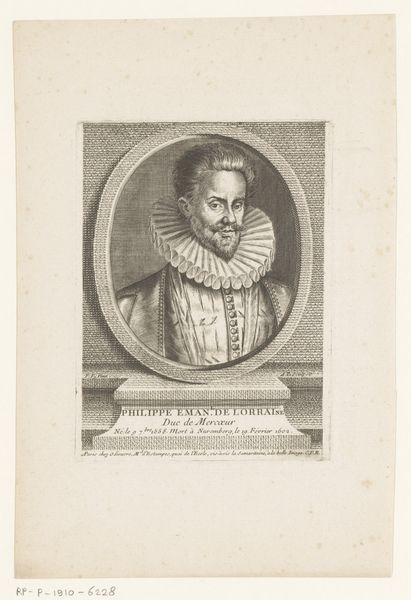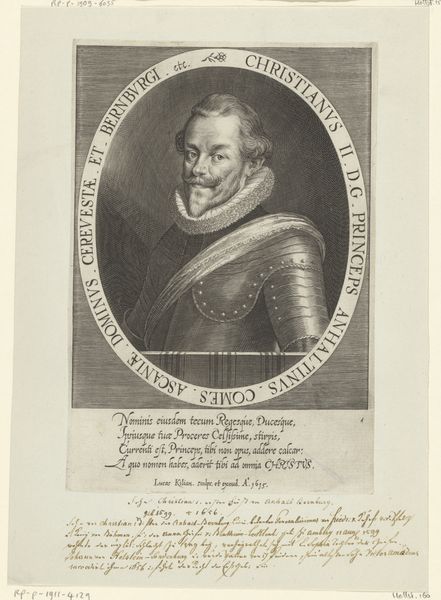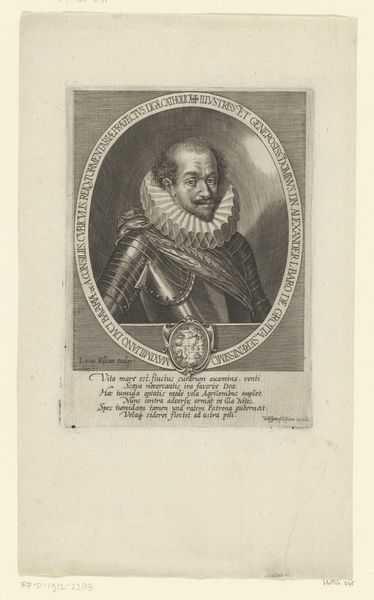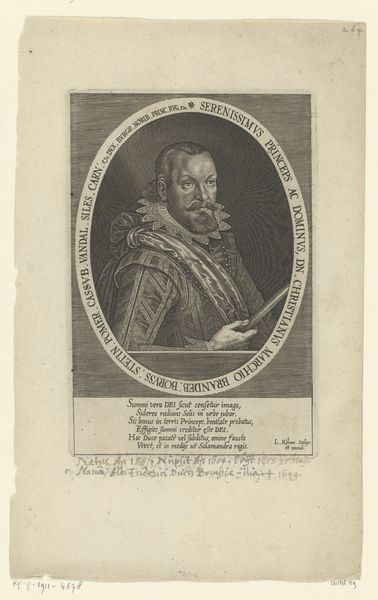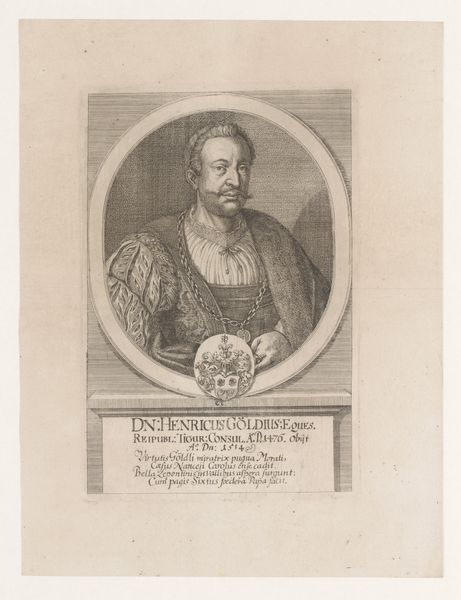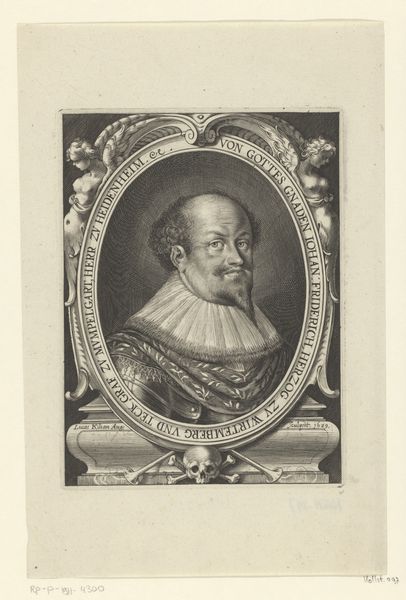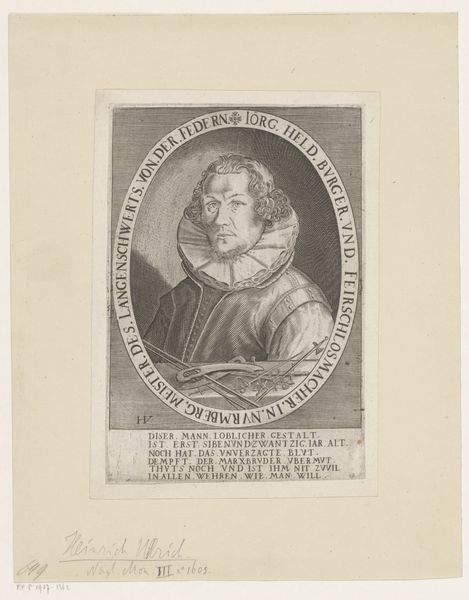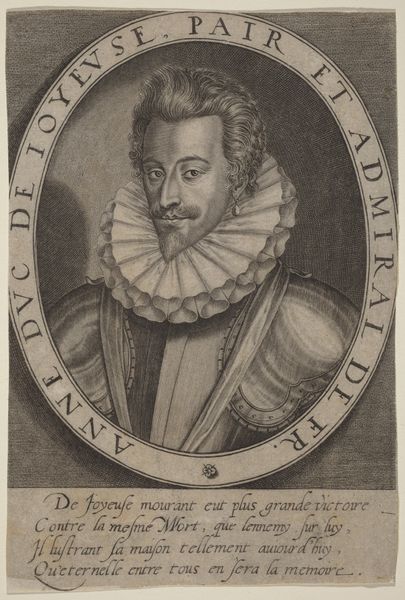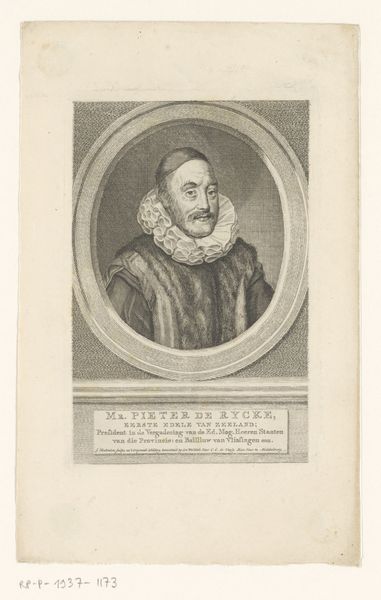
print, engraving
#
portrait
#
baroque
# print
#
old engraving style
#
line
#
engraving
Dimensions: height 156 mm, width 114 mm
Copyright: Rijks Museum: Open Domain
This print of Anne de Joyeuse was made by René Gaillard in the 1700s, using a technique called engraving. The image begins as a polished metal plate, often copper. The artist then uses a tool called a burin to manually carve lines into the plate's surface. The incised lines hold ink, which is transferred to paper under great pressure. The resulting print has a crisp, precise quality. This was a highly skilled practice, demanding years of training. Notice the intricacy of the lines used to create the portrait. This wasn’t just about artistic expression; it was piecework, a trade, and a livelihood. Engraving was essential for disseminating information and images in the pre-photographic era. Prints like these were produced and consumed on a mass scale. Remembering this process and social context helps us understand this image as both art and a product of its time, blurring the lines between craft and fine art.
Comments
No comments
Be the first to comment and join the conversation on the ultimate creative platform.
